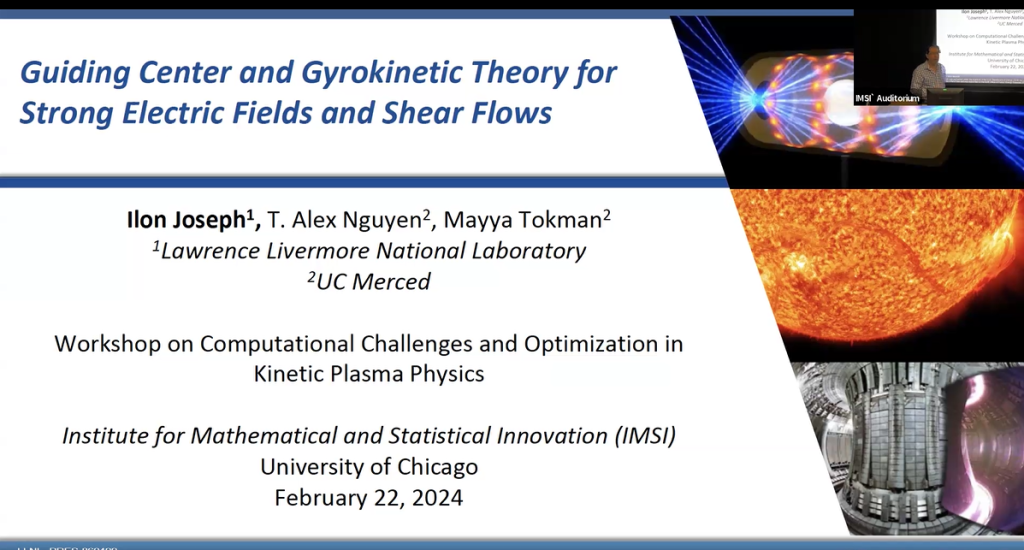Guiding Center and Gyrokinetic Theory for Strong Electric Fields and Shear Flows
Presenter
February 22, 2024
Event: 51881
Abstract
The guiding center and gyrokinetic theory of magnetized particle motion can be extended to the regime of large electric field gradients and strong shear flows. A gradient in the electric field directly modifies the oscillation frequency and causes the Larmor orbits to deform from circular to elliptical trajectories. In order to retain a good adiabatic invariant, there can only be strong dependence on a single coordinate at lowest order, so that resonances do not generate chaotic motion that destroys the invariant. When a single gradient direction is dominant, the guiding center drift velocity becomes anisotropic in response to external forces and additional curvature drifts must be included. The electric polarization and magnetization are also modified by the change in gyrofrequency and by the large drift flows. The theory can be applied to electric fields and shear flows that are even stronger than those observed in the edge transport barrier of a high-performance tokamak (H-mode) pedestal, even if the toroidal field is as small as or even smaller than the poloidal field. Yet, the theory retains a mathematical form that is similar to the standard case and can readily be implemented within existing simulation tools.The theory above motivates the use of exponential integrators for accelerating the computation of particle trajectories. We have improved exponential integrators for small systems of equations by explicitly computing the eigenfrequencies and using the Lagrange-Sylvestermethod for the computation of matrix exponential functions. We show that explicit exponential integrators can provide performance enhancements over the best performing explicit methods, the Boris and Buneman method, when gyrodradius accuracy is required. This opens a promising direction for particle-in-cell codes.
*LLNL-ABS-858862 prepared by LLNL for U.S. DOE under Contract DE-AC52-07NA27344.
Collaborators: T. Alex Nguyen (Lawrence Livermore National Laboratory) and Mayya Tokaman (University of California, Merced)
